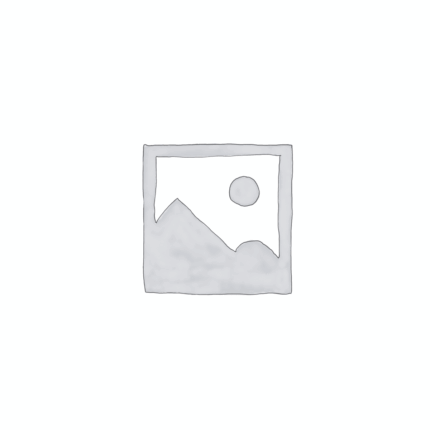Agar Agar Powder Extra Pure
Agar Agar Powder Extra Pure is a high-grade, natural polysaccharide derived from red algae, valued for its superior gelling, thickening, and stabilizing properties. This fine, off-white powder dissolves in hot water to form firm, heat-stable gels, making it indispensable in microbiological media preparation, molecular biology, and food-grade laboratory testing. Its extra pure quality ensures minimal impurities, making it suitable for sensitive applications in pharmaceuticals, cosmetics, and biotechnology research. Agar Agar Powder is also a preferred vegetarian alternative to gelatin in various experimental and industrial settings. It must be stored in a cool, dry place to maintain its integrity, flow properties, and effectiveness in both scientific and technical formulations.
USES
Primary Uses
- Microbiological Culture Media
- Primary gelling agent in Petri dishes and slants for bacterial, fungal, and yeast culture growth.
- Tissue Culture & Plant Propagation
- Essential for creating semi-solid nutrient media in plant biotechnology and genetic research.
- Molecular Biology (Electrophoresis Support)
- Used to prepare agarose-like gels for separation of nucleic acids in low-resolution gel electrophoresis.
- Food Testing & Quality Control Labs
- Used in media formulations for microbial testing of food and beverage samples.
- Pharmaceutical Research
- Acts as a stabilizer or controlled-release agent in lab-scale pharmaceutical formulations.
- Acts as a stabilizer or controlled-release agent in lab-scale pharmaceutical formulations.
Secondary Uses
- Cosmetic & Dermatological Testing
- Used in formulation of test gels or cream bases for lab evaluation.
- Environmental Microbiology
- For sampling and culturing airborne, aquatic, or soil microorganisms in ecological studies.
- Biodegradable Material Research
- Acts as a component in the study of natural biofilms or bioplastics.
- Educational Use in Schools & Universities
- Safe and high-quality material for biology and microbiology demonstrations.
- Petri Film Manufacturing & R&D
- Ingredients in ultra-pure pre-poured agar films or dry media research.
| AVAILABLE GRADES |
LABORATORY GRADE, |
|---|---|
| PACK SIZE AVERAGE | |
| AVAILABLE TEXTURES |
Powdery – Fine, dry particles (e.g., baking soda, powdered detergents). |
1. Basic Identification Attributes
- Chemical Name: Agar-Agar (complex polysaccharide derived from red algae)
- CAS Number: 9002-18-0
- HS Code: 13023100
- Molecular Formula: Varies (primarily C₁₄H₂₄O₉)n – composed of agarose and agaropectin
- Synonyms:
- Agar
- Gelose
- Kanten (in Japanese)
- Vegetable gelatin
- E406 (as a food additive)
2. Physical & Chemical Properties
- Physical State: Solid (powder)
- Color & Odor: Off-white to pale yellow; odorless or slightly earthy
- Boiling Point: Not applicable (decomposes)
- Melting Point: Gel melts at ~85°C, solidifies at ~32–40°C
- Density/Specific Gravity: ~0.6–0.9 g/cm³ (bulk density)
- Solubility:
- Water: Insoluble in cold water; dissolves in boiling water
- Organic Solvents: Insoluble in alcohol and other organic solvents
- pH Level: ~6.0–7.5 (1.5% solution)
- Vapor Pressure & Volatility: Not volatile
- Flash Point: Not flammable
- Autoignition Temperature: Not applicable
- Viscosity: Forms a viscous gel when dissolved in hot water and cooled
3. Safety & Hazard Attributes
- Hazard Class (GHS): Not classified as hazardous
- NFPA Ratings:
- Health: 0
- Flammability: 0
- Reactivity: 0
- Exposure Limits:
- No established OSHA or ACGIH exposure limits
- Reactivity:
- Chemically stable under recommended conditions
- No significant reactivity hazards known
4. Storage & Handling Attributes
- Storage Conditions:
- Store in a cool, dry place in a tightly sealed container
- Avoid humidity and direct sunlight
- Incompatible Materials:
- Strong oxidizers (may cause degradation)
- Container Type:
- HDPE jars, food-grade plastic, fiber drums with liners
- Shelf Life & Expiration Date:
- 2–3 years if stored properly in dry, sealed conditions
- Special Handling Requirements:
- Use dust mask or respirator in case of airborne particles
- Avoid inhalation of powder
5. Regulatory & Compliance Attributes
- Regulatory Status:
- Approved by FDA (GRAS), EFSA (E406), and Codex Alimentarius
- REACH-exempt (natural polymer)
- Hazard Symbols (GHS Pictograms):
- None required – nonhazardous material
- Transportation Restrictions:
- Not regulated for transport
- No UN number or special hazard classification
- Waste Disposal Method:
- Dispose of in accordance with local, regional, and national regulations
- Biodegradable – safe to dispose with organic or food waste
6. Environmental & Health Impact
- Ecotoxicity:
- Considered non-toxic to aquatic and terrestrial life
- Persistence in Environment:
- Biodegradable and environmentally friendly
- Carcinogenicity/Mutagenicity:
- Not classified as carcinogenic or mutagenic by any regulatory body
- Biodegradability:
- Completely biodegradable in soil and water
SAFETY PRECAUTIONS
- Personal Protective Equipment (PPE):
- Wear gloves, dust mask (or respirator for fine powders), lab coat, and safety goggles.
- Avoid generating dust.
- Handling:
- Handle in a well-ventilated area to prevent inhalation of airborne particles.
- Avoid contact with eyes, skin, and clothing.
- Minimize dust generation and accumulation.
- Storage:
- Store in a tightly closed container in a cool, dry, and well-ventilated place.
- Protect from moisture and direct sunlight.
- Keep away from strong oxidizing agents.
- Hygiene Measures:
- Wash hands thoroughly after handling.
- Avoid eating, drinking, or smoking near the chemical.
FIRST AID MEASURES
- Inhalation:
- Move the exposed person to fresh air.
- If breathing becomes difficult, seek medical advice.
- Rinse mouth and nose with water to remove any dust.
- Skin Contact:
- Wash affected area with soap and water.
- Remove contaminated clothing.
- Seek medical advice if irritation develops.
- Eye Contact:
- Rinse cautiously with clean water for at least 15 minutes.
- Remove contact lenses if easy to do.
- Seek medical attention if discomfort persists.
- Ingestion:
- Rinse mouth with water.
- If symptoms occur (e.g., bloating or discomfort), seek medical attention.
- Non-toxic in small quantities, but medical advice is recommended for large ingestion.
FIRE FIGHTING MEASURES
- Suitable Extinguishing Media:
- Use water spray, dry chemical powder, carbon dioxide (CO₂), or foam.
- Specific Hazards:
- May emit carbon monoxide and carbon dioxide on thermal decomposition.
- Fine dust can form explosive mixtures with air in confined spaces.
- Protective Equipment for Firefighters:
- Wear self-contained breathing apparatus (SCBA).
- Use full protective gear in case of major fire.
- Firefighting Instructions:
- Avoid stirring up dust.
- Cool exposed containers with water spray.
- Extinguish from a safe distance and upwind.


 Pesticides (Herbicides, Insecticides, Fungicides)
Pesticides (Herbicides, Insecticides, Fungicides) Animal Feed Additives
Animal Feed Additives Biostimulants
Biostimulants Plant Growth Regulators
Plant Growth Regulators Fertilizers
Fertilizers Soil Conditioners
Soil Conditioners
 Decoratives
Decoratives Dough Conditioners
Dough Conditioners Fat Replacers
Fat Replacers Flour Treatments
Flour Treatments Leavening Agents
Leavening Agents Preservatives(baking)
Preservatives(baking)
 Bleaching Agents
Bleaching Agents Builders
Builders Enzymes
Enzymes Fragrances
Fragrances Surfactants(cleaning)
Surfactants(cleaning) Solvents (cleaning)
Solvents (cleaning)
 Admixtures
Admixtures Anti-Corrosion Coatings
Anti-Corrosion Coatings Concrete Repair Chemicals
Concrete Repair Chemicals Curing Compounds
Curing Compounds Sealants and Adhesives
Sealants and Adhesives Waterproofing Agents
Waterproofing Agents
 Antioxidants(cosmetic)
Antioxidants(cosmetic) Emollients
Emollients Fragrances and Essential Oils
Fragrances and Essential Oils Humectants
Humectants Surfactants(cosmetic)
Surfactants(cosmetic) Thickeners
Thickeners UV Filters
UV Filters Preservatives (cosmetic)
Preservatives (cosmetic)
 Bio-based Solvents
Bio-based Solvents Biodegradable Surfactants
Biodegradable Surfactants Carbon Capture Chemicals
Carbon Capture Chemicals Renewable Polymers
Renewable Polymers Wastewater Treatment Chemicals
Wastewater Treatment Chemicals
 Acidulants
Acidulants Antioxidants
Antioxidants Colorants(food)
Colorants(food) Emulsifiers
Emulsifiers Flavor Enhancers
Flavor Enhancers Nutraceutical Ingredients (food)
Nutraceutical Ingredients (food) Nutrient Supplements
Nutrient Supplements Preservatives(food)
Preservatives(food) Sweeteners
Sweeteners
 Dried Herbs
Dried Herbs Fresh Herbs
Fresh Herbs Ground Spices
Ground Spices Spice Blends
Spice Blends Whole Spices
Whole Spices
 Analytical Reagents
Analytical Reagents Biochemical Reagents
Biochemical Reagents Chromatography Chemicals
Chromatography Chemicals Inorganic and Organic Standards
Inorganic and Organic Standards Laboratory Safety Chemicals
Laboratory Safety Chemicals Microbiology and Cell Culture Reagents
Microbiology and Cell Culture Reagents Molecular Biology Reagents
Molecular Biology Reagents Solvents(lab)
Solvents(lab) Specialty Laboratory Chemicals
Specialty Laboratory Chemicals Spectroscopy Reagents
Spectroscopy Reagents
 Collectors
Collectors Dust Suppressants
Dust Suppressants Explosives and Blasting Agents
Explosives and Blasting Agents Flocculants and Coagulants
Flocculants and Coagulants Frothers
Frothers Leaching Agents
Leaching Agents PH Modifiers
PH Modifiers Precious Metal Extraction Agents
Precious Metal Extraction Agents
 Catalysts
Catalysts Corrosion Inhibitors
Corrosion Inhibitors Demulsifiers
Demulsifiers Drilling Fluids
Drilling Fluids Hydraulic Fracturing Fluids
Hydraulic Fracturing Fluids Scale Inhibitors(oil)
Scale Inhibitors(oil) Surfactants(oil)
Surfactants(oil)
 Active Pharmaceutical Ingredients (APIs)
Active Pharmaceutical Ingredients (APIs) Analgesics and Antipyretics
Analgesics and Antipyretics Antibiotics
Antibiotics Antiseptics and Disinfectants
Antiseptics and Disinfectants Excipients
Excipients Nutraceutical Ingredients (Pharmaceutical)
Nutraceutical Ingredients (Pharmaceutical) Solvents(pharmaceutical)
Solvents(pharmaceutical) Vaccine Adjuvants
Vaccine Adjuvants
 Antioxidants(plastic)
Antioxidants(plastic) Colorants (Pigments, Dyes)
Colorants (Pigments, Dyes) Fillers and Reinforcements
Fillers and Reinforcements Flame Retardants
Flame Retardants Monomers
Monomers Plasticizers
Plasticizers Polymerization Initiators
Polymerization Initiators Stabilizers (UV, Heat)
Stabilizers (UV, Heat)
 Accelerators and Retarders
Accelerators and Retarders Adhesion Promoters
Adhesion Promoters Antidegradants (Antioxidants, Antiozonants)
Antidegradants (Antioxidants, Antiozonants) Blowing Agents (for foam rubber)
Blowing Agents (for foam rubber) Plasticizers and Softeners
Plasticizers and Softeners Reinforcing Agents (Carbon Black, Silica)
Reinforcing Agents (Carbon Black, Silica) Vulcanizing Agents (e.g., Sulfur, Peroxides)
Vulcanizing Agents (e.g., Sulfur, Peroxides)
 Analytical Reagents
Analytical Reagents Automotive chemicals
Automotive chemicals Electronic Chemicals
Electronic Chemicals Lubricants
Lubricants Photographic Chemicals
Photographic Chemicals Pyrotechnic Chemicals
Pyrotechnic Chemicals Refrigerants
Refrigerants Sealants and Adhesives
Sealants and Adhesives
 Antistatic Agents
Antistatic Agents Bleaching Agents
Bleaching Agents Dyes and Pigments
Dyes and Pigments Finishing Agents
Finishing Agents Flame Retardants
Flame Retardants Softening Agents
Softening Agents
 Antifoaming Agents
Antifoaming Agents Chelating Agents
Chelating Agents Coagulants and Flocculants
Coagulants and Flocculants Corrosion Inhibitors
Corrosion Inhibitors Disinfectants and Biocides
Disinfectants and Biocides Oxidizing Agents
Oxidizing Agents pH Adjusters (water)
pH Adjusters (water) Scale Inhibitors( water)
Scale Inhibitors( water)















